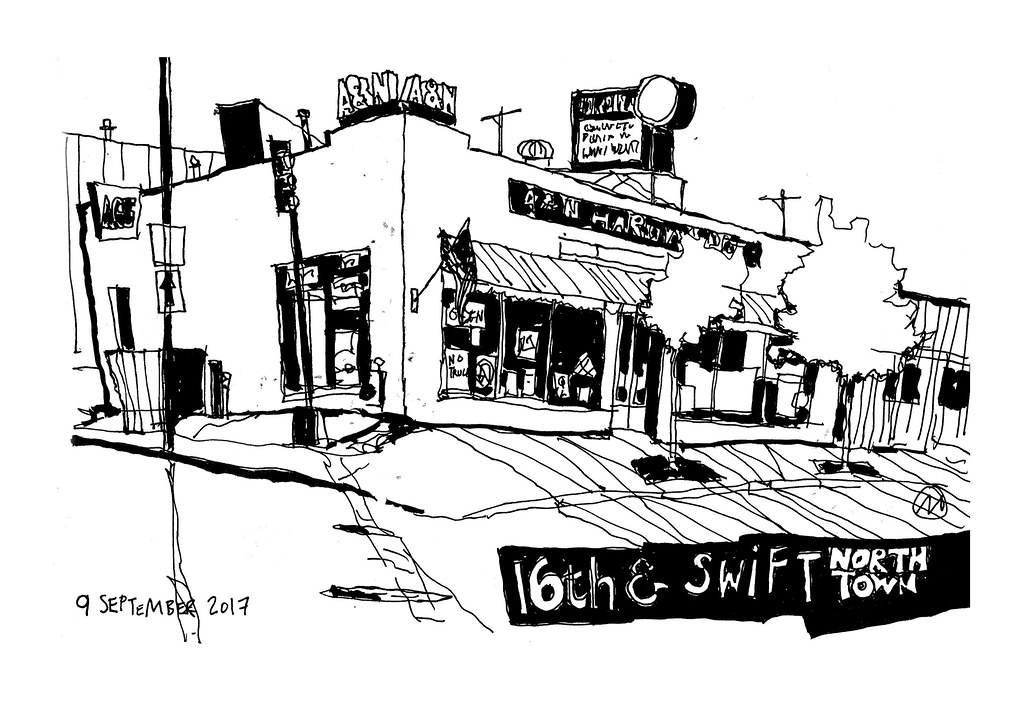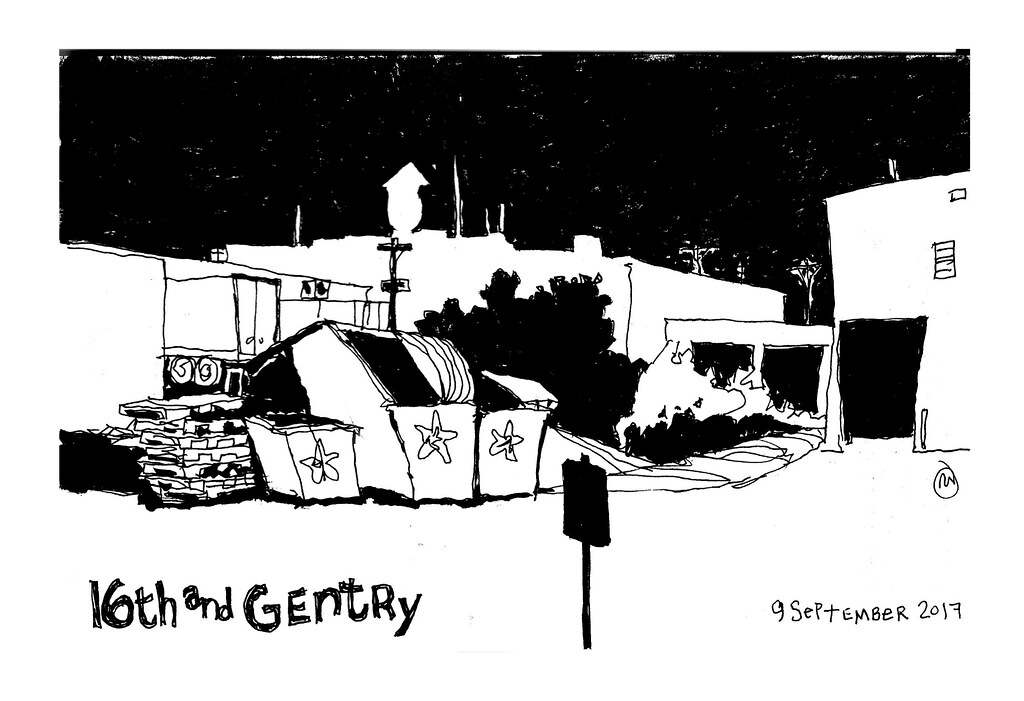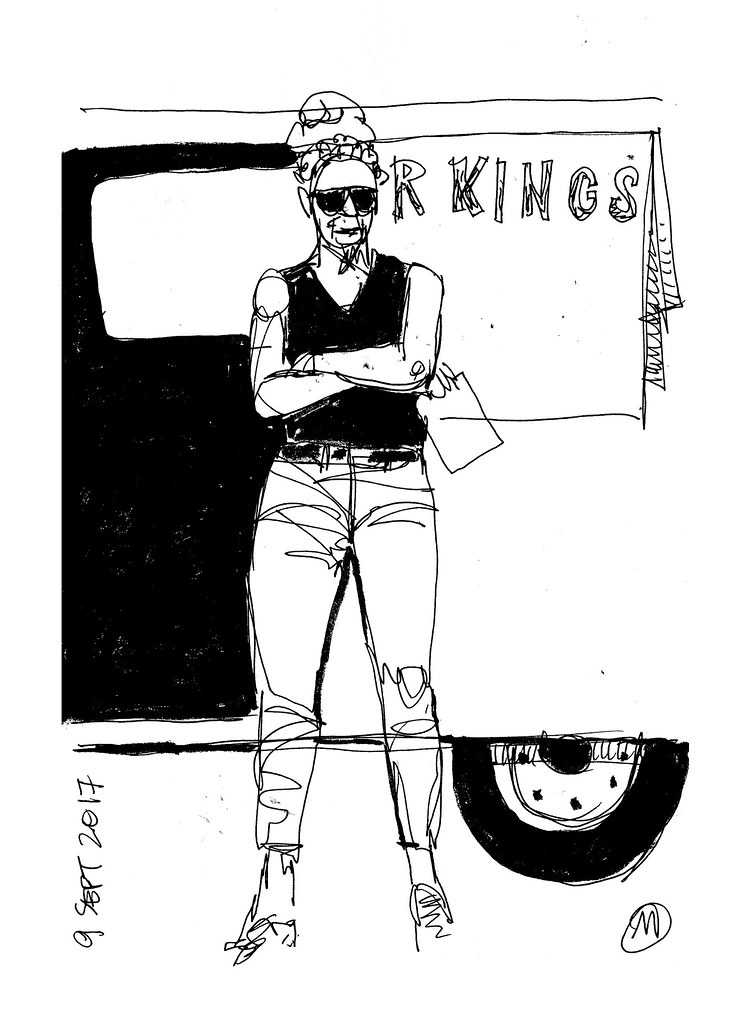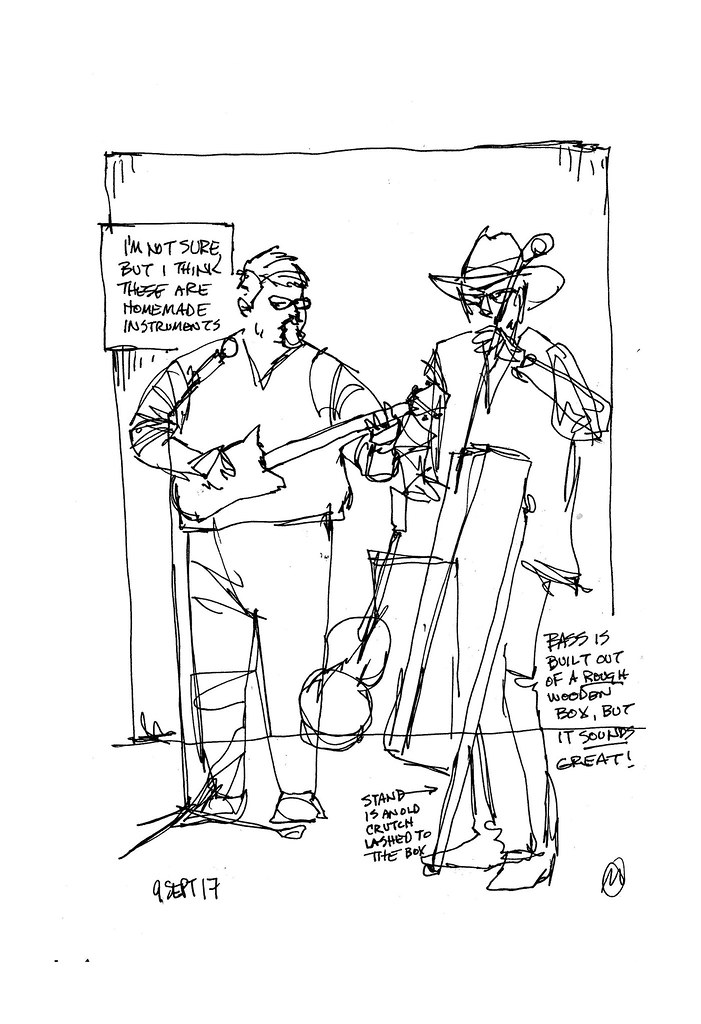
10 September, 2017. Sketching out in public, as I’ve mentioned countless times before, often results in conversations and gawkers and curiosity. Artists making art are an exotic encounter for many people, and it’s not unusual for a passerby to stop, look over my shoulder, and even share a little story about whatever it is I’m drawing at the time. They might tell me about a sister or a cousin or a neighbor who also makes art of some kind or other. In a hopeful voice they mention Do you happen to know them? I think folks sincerely believe artists have a club that we all belong to and as card carrying members we must – obviously! – all know one another quite well.
I’m interested in hearing their stories, especially when they offer some kind of insight into whatever it is I happen to be sketching at the time. The hardware store (above) was a block or two from the meet up location for our monthly USk sketch out and I just love the place. It seems to me to be one of the last truly authentic hardware stores, but beyond that I really knew nothing at all about it. My friend Peggy asked if I’d ever been in there. I told her I’d always wanted to but had not. Oh, you’ve GOT to go in there, she exclaimed. And now, that little tiny story has me pining to get inside the building. I want to see the old wood floors she described to me. I want to meet the people and explore the aisles to see what cool old surprises I might discover. And I want to do that with my pen and pad in hand.

People – artists included – want to know what I plan to do with my sketches. Do I exhibit them? Frame them and sell them? And yes, sometimes I make prints and sell those. Sometimes I hang work and exhibit it. And because I love books, I kind of have a book project in the back of my mind – my sketches probably are best suited to that format anyway. But mostly, I don’t do anything with them. They’re a visual means of sharing a moment in time, telling the story of where I was and what I was thinking for the twenty minutes or so that I spent scribbling in my journal.
The sketches are a sort of “back up drive” for my memories. I’ve tried repeatedly to find a good location to sketch the water tower depicted in the background of the sketch above. It’s a cool structure and I’m fascinated by it. It’s easy to see as we zoom by on the highway, but finding a convenient sketching location in the warehouse district in which it’s located has defeated me time and again. And on this morning, I was once again defeated – it became an important element in the background of a sketch that started out as a skyline idea… and then evolved into a drawing focused on trash cans!

Maybe it’s the art teacher in me, but I enjoy chatting with our newest sketchers. They’re often curious about what to do on location – how to start a sketch, what techniques are appropriate, etc. Each of us brings a unique vision and a unique approach to handling materials and media. A lot of the “whizzbang” of sketching comes from doing a lot of sketches, practicing and getting comfortable with the tools. One of our members, Liz, has gotten progressively better with her watercolor over the past six or seven months from simply sketching every day. Her renderings are really confident now, with a nicely refined touch of color.
When others ask me about how to get started, I will often share one of several strategies I use to develop a composition. I figure if the design is interesting, the sketch can develop around it. But a great drawing without any context or content just boors me. Case in point: the barber shop above caught my attention. I wasn’t sure how to approach it because most of the building really doesn’t have much character. The interesting parts are around the barber pole, the door, the window, the signage. That’s it. And having run out of ink in my brush pen I penned in the gestural contour lines and left it at that. I felt like the drawing had failed and I didn’t even show it to anyone when we met up after the sketching ended. But back at home with a refilled brush pen I considered where I might add the solid areas of black. And sure enough the contrast and drama of the black fills resulted in a much more interesting image, and one in which I feel like I now need to know more of the story of this place.

I rode my bike to the street fair where we were sketching yesterday. Straddling the bike, I whipped out a pencil to scribble in the gesture lines for the sketch above and the one below. The woman glared at me the entire twenty seconds that I sketched her and I simply didn’t have the guts to refine and ink it while I stood there. Ink, in this case, came later from the safety of a park bench.

(Uni-Ball Deluxe, Kuretake No. 40 – at least until the ink ran dry! – on various Canson papers; North Kansas City, Missouri)








